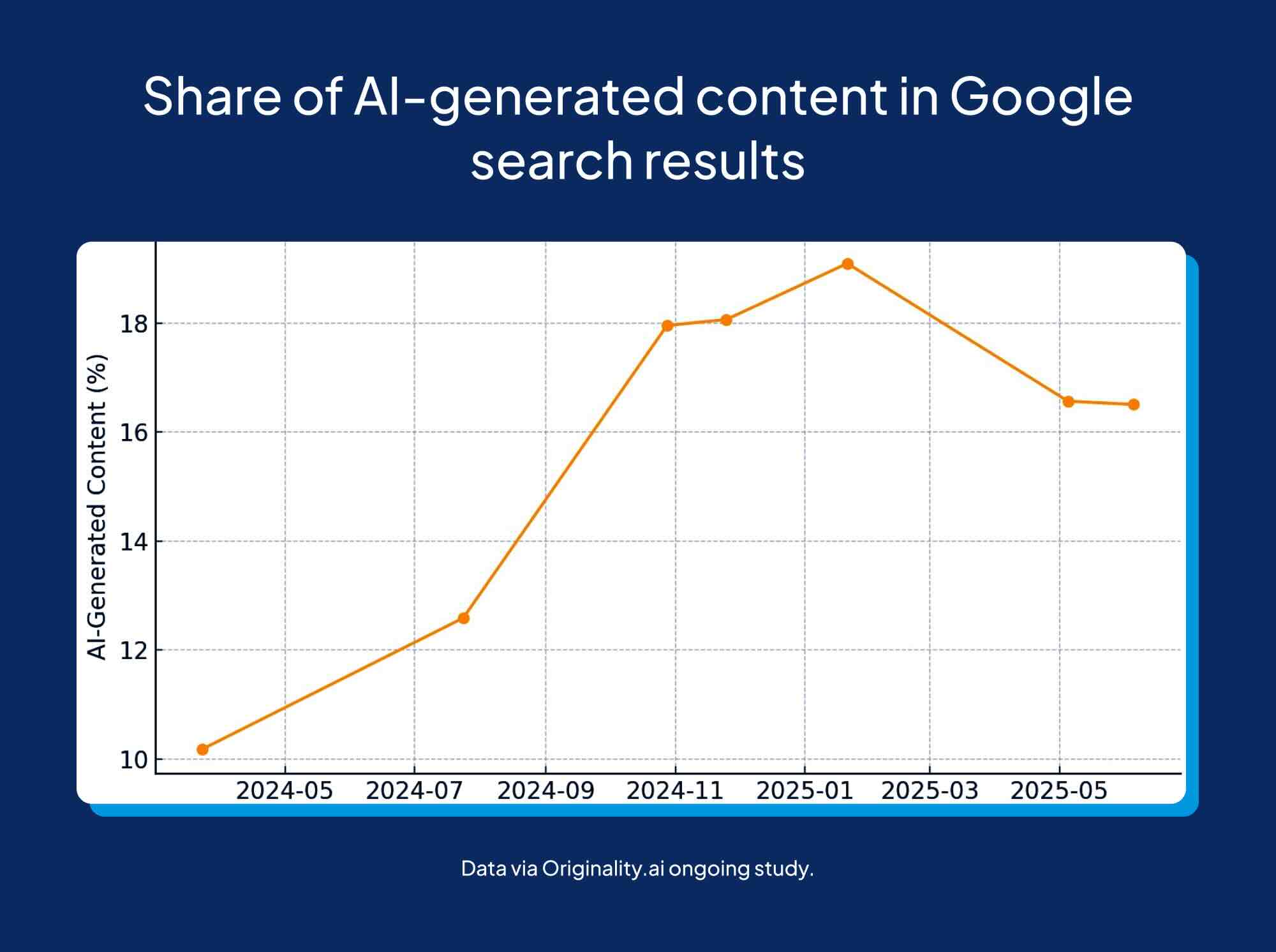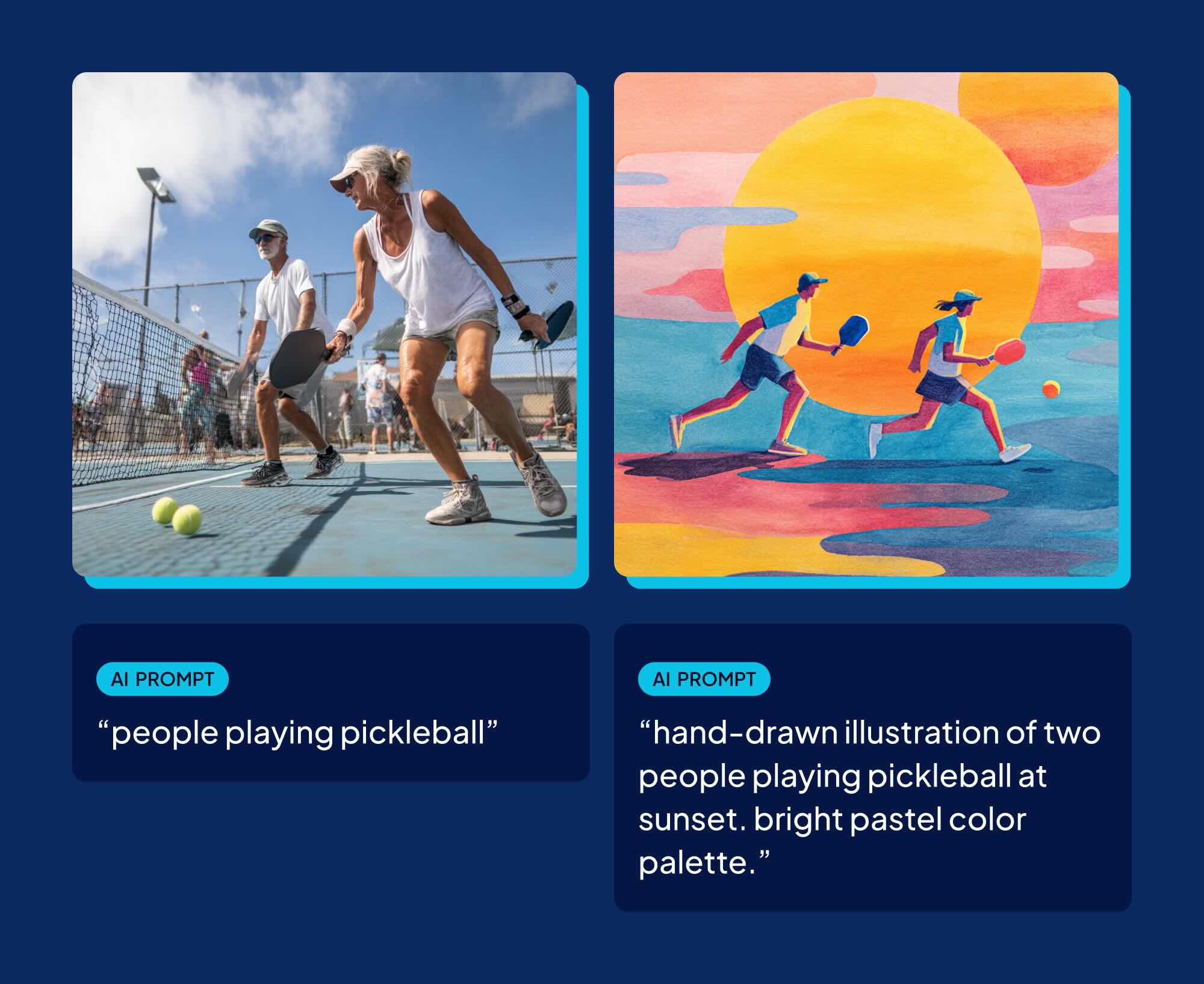
“AI slop” is the catch-all label critics give to the tidal wave of low-effort, machine-generated text, images, video, and audio that we’re starting to drown in online.
Coined in the early 2020s, the term conjures images of digital junk food—cheap and plentiful, but nutritionally empty. An influential New York magazine essay by Max Read helped push AI slop into the national conversation.
Definitions vary, AI slop is essentially content whose primary goal is volume or click-bait utility rather than insight, craft, or originality. Creating quick-and-fast slop can be a tempting proposition, especially for brands with limited resources who need to produce assets at scale.

A few key stats shed light on how sloppy the current internet is.
The problem isn’t just that low-quality content is annoying or bad, or that your mom’s Facebook feed is now full of fake AI images of implausible animal friendships. It’s that generative models learn from the very pool they help fill.
The “curse of recursion”—demonstrated by researchers at Oxford and DeepMind—shows that repeatedly training on model-generated data drives output toward bland sameness and factual drift.
If the open web continues to thicken with AI slop, tomorrow’s models will be trained on today’s junk, accelerating a feedback loop that degrades creativity, accuracy, and even the training data available for future AI systems.For marketers, that means brand trust erodes, SEO value declines (Google is already de-indexing spammy AI sites), and differentiation becomes almost impossible in a sea of formulaic prose and uncanny images with too many limbs.
Just because you’re using GenAI marketing tools doesn’t mean you’re contributing to the slop problem. Indeed, the proper marriage of human creativity and machine-learning can produce winning results. It’s when marketers get lazy (or lean on the wrong tools) that their output gets sloppy.
Here’s what to consider if you want to embrace AI without the slop.
Proprietary information will give you a leg up, rather than letting LLMs pull from the public internet alone. Genuine first-party data is algorithm-proof; it forces the model to build on something fresh rather than remix existing web slurry.
GenAI brainstorming and production tools like Propellers can be fed your brand guidelines, brand voice guidelines, and other reference assets, providing helpful guardrails and guidance to the models that lead to superior results.
Treat your AI tools as draft engines, not infallible co-workers. Make sure that any AI-generated content, whether text or visuals, is given a full review by at least one (human) domain expert on your team.
Don’t really on a single LLM for all your needs, but rather use what’s best for your current task. This can become labor-intensive and intensive, though, as you toggle between Gemini, ChatGPT, and Midjourney, for instance.
Purpose-built solutions (like Propellers) avoid this hassle by integrating the most applicable LLMs together, without the user having to determine the best fit on their own.
No matter which AI model you're using, the quality of your prompting makes a huge difference. Generic prompts are more likely to spin up slop. Taking time to add texture, specificity, and style guidelines goes a long way.

Track dwell time, bounce rate, and social sentiment on human-led vs. AI-blended assets. If engagement dips, tweak your plans, and add a bit more human to your loop.
That Instagram asset you created for your burger brand looks great—until you realize that one of the AI-generated diners in the background has an oddly shaped head, and appears to be trying to insert the burger into his ear.
While AI image and video generation is evolving at lightning speed, it’s still prone to mistakes and hallucinations. Here’s how to avoid letting accidental slop slip through.

Get your art director on board as a prompt engineer. Reference real camera lenses, lighting styles, and composition notes to create images that don’t have the hallmarks of AI slop (SEE ALSO: promo shots for the controversial fake band Velvet Sundown).
Incorporate your brand’s color palette, logo, or other visual elements in final assets, giving a sense of specificity rather than generic LLM output.
Zoom in on assets to seek out weird limbs, dead eyes, nonsense text, or colors that don’t exactly match your brand palette.
The solution to AI slop is not to abandon AI as a creative tool. Instead, marketers need to approach this technology with care, caution, and oversight. Teams that combine proprietary inputs, rigorous human editing, and smart orchestration of multiple models will gain the benefits of AI without the taint of AI slop.
Choosing purpose-built GenAI tools over off-the-shelf products like Midjourney, DALL-E, or ChatGPT can make a big difference.
Learn how Propellers (part of The Marketing Cloud Platform) can help brainstorm creative briefs and visual assets that drive impact, not slop.